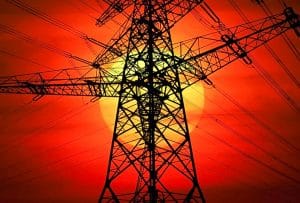Electricity meters are the unsung heroes of modern life, silently measuring the electricity consumption in our homes and businesses and ensuring we receive accurate bills from our energy providers. If you’re living in Australia and want to take control of your energy usage and costs, it’s essential to understand how to read your electricity meter. In this beginner’s guide, we’ll demystify the process of reading electricity meters in Australia, empowering you to monitor your usage and make informed energy-saving decisions.
Switching to a better plan? You may already have an energy plan but want more power or to shop for a better deal.
Energy Matters‘ Free Energy Bill Comparator” is a cutting-edge energy bill tool that compares your area’s most competitive retail offers. We collect the data from our wide range of trusted retailers, allowing you to decide on the switching plan and find the best deal for your needs.
If your goal is to get more electricity and minimise the cost of your gas and electricity bills, switch to a better plan now!
Why is it important to read your electricity meter?
Before we delve into the specifics of reading electricity meters, let’s understand why it’s crucial to do so:
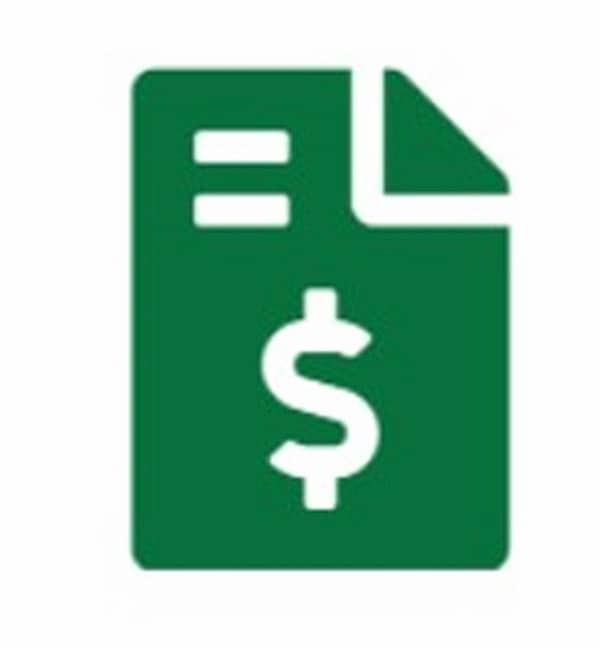
Accurate billing
Utility companies use the data from your electricity meter to calculate your energy consumption. By reading your meter, you can ensure you are billed correctly and avoid overpaying
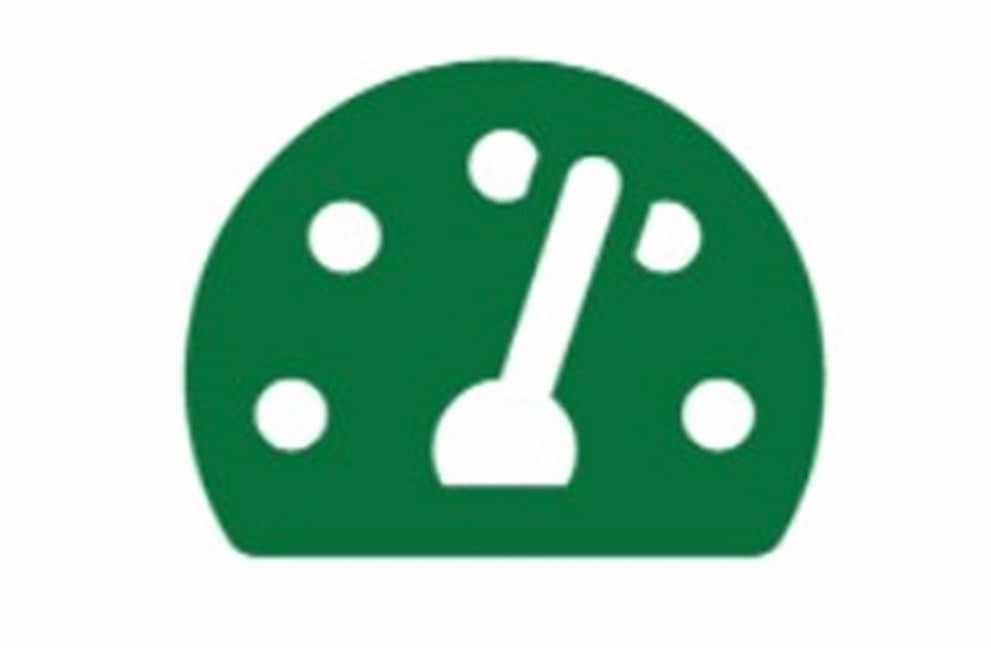
Monitor energy usage
Reading your electricity meter allows you to track your daily, weekly, or monthly energy usage patterns. This information can help you identify energy-saving opportunities and make more informed decisions about electricity consumption.

Budgeting
Knowing how much energy you use helps you budget your electricity expenses more accurately. It allows you to plan for peak usage periods and find ways to reduce your energy costs.
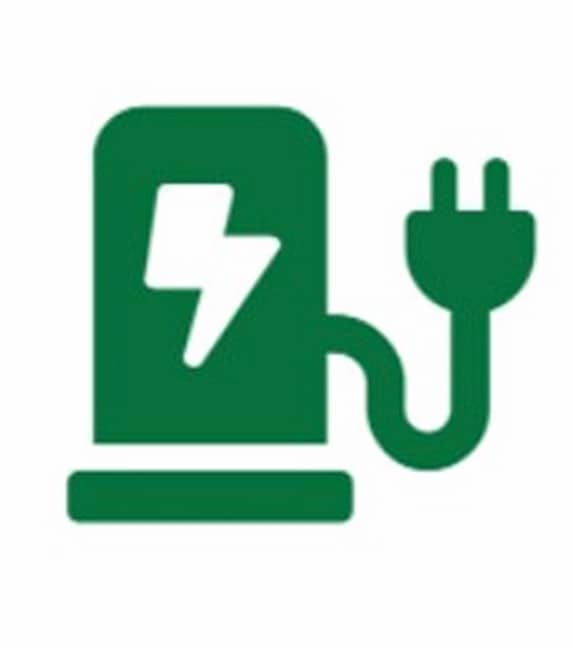
Detect anomalies
Regular meter readings can help you spot any irregular energy usage, which may indicate equipment malfunctions, energy theft, or other issues that need immediate attention.
How do I read my electric meter?
Reading your electricity meter in Australia is easier than you think! Locate your meter box, and if it has clock-face dials, note down the numbers from left to right, using the lower number if a dial falls between two. Don’t forget “leading zeros” – they matter! Press designated buttons to scroll through readings for digital displays, recording each “electricity meter number” displayed.
Remember, understanding your meter empowers you to track usage and potentially cut costs, so grab a notepad and try it! Here are the types of electricity meters:
1. Electricity smart meters
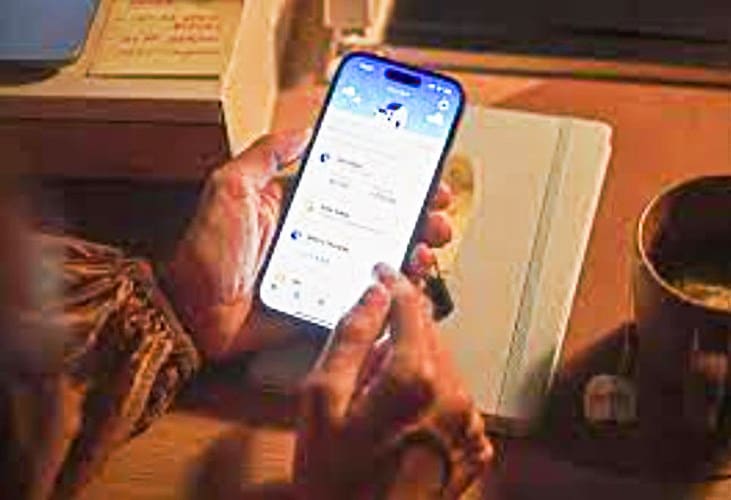
Smart meters are digital meters that measure electricity usage in real time. They send this data to electricity retailers and distributors, who can use it to bill customers more accurately and provide information about their energy consumption.
Smart meters are being rolled out in all Australian states and territories. In Victoria, they are mandatory for all households and businesses. In other states, they are installed voluntarily, but most retailers now offer them to their customers.
Remotely read smart meters
In most circumstances, there is no need to visit your house because the usage data from remotely read smart metres is supplied straight to the metre service provider/Distributor.
If you have a remotely read smart meter, you can view your usage on an hourly, daily, weekly, monthly, and, in cases where there is enough usage data on an annual basis, using My Account apps. Within 72 hours after consumption, all usage information is accessible for viewing.
Manually read interval meters
These meters can’t be read remotely; the distributor or service provider must physically download the information from your meter.
You can still use My Account to view your usage hourly, daily, weekly, monthly, and where there is enough annual usage data, even though these metres cannot be remotely read. After your metre provider or distributor reads the meter, and within 72 hours after the reading, all usage information is updated and available for viewing.
2. Electricity meter type
Electricity meter with a clock display
The read for this meter is 98595. To read an electricity meter number with a clock display:
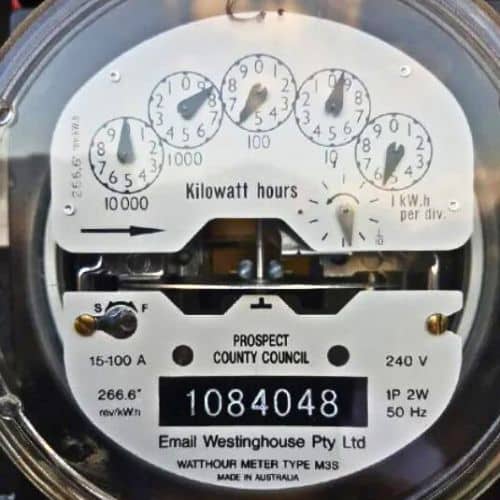
- You need to look at the dials from left to right.
- The first dial records the units of electricity used, the second dial records the tenths of units, and the third dial records the hundredths of units.
- If a dial is between two numbers, you should write down the lower of the two. The only exemption is to write down 9 if the dial is between 9 and 0.
- The clock display shows the current time, which can help track your electricity usage over time.
Electricity meters with clock displays are a type of traditional accumulation meter that is still in use in some parts of Australia. These meters have a number of dials that record the amount of electricity used, and some of them also have a clock display.
Electricity meters with an odometer display
The read for this electric meter number is 13858.
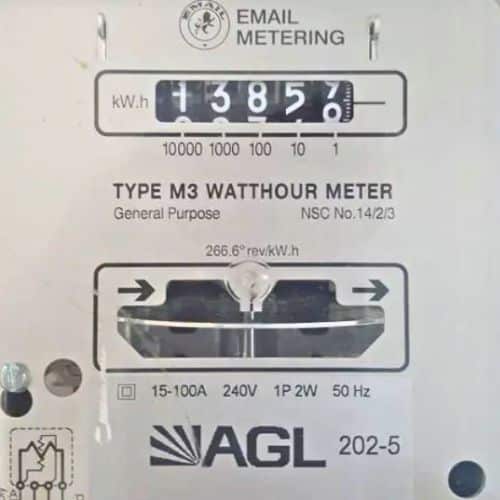
The metre can be read from left to right, including all leading zeros. If a dial appears between two numbers, note the lower number unless it is between 9 and 0, in which case write 9.
Please read both readings on your meter, marked with an L and H, from left to right. Please provide both numbers if you have this type of metre.
Electricity meter with a digital display
The read for this electric meter number is 80842.
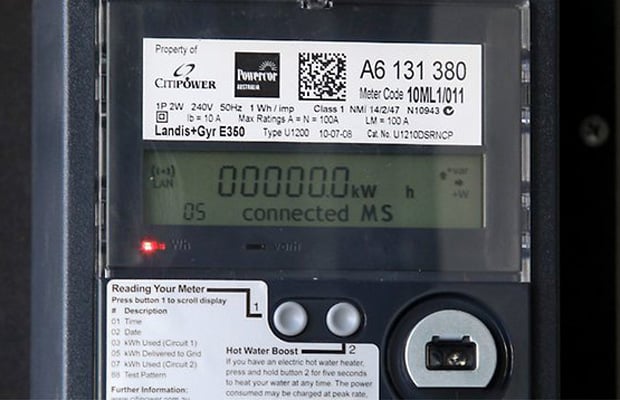
Press the’ Display’ button to display the reading options on the screen. It can take more than one press to move to the right screen.
Include all numbers shown (including any leading zeroes, if any).
To determine which screen you need to view, consult the setup reference manual on the metre if one is available.
Note: The image’s screen displays the little number ’03’. It is, therefore, on panel number 3, which displays the overall KWh consumed. Keep these numbers out of your reading. If there is a ‘Boost’ button on your metre, be careful not to press it.
Source&Images: AGL website
Tired of being the last to know about updates in the renewable energy world? Did you miss out on a state rebate or incentive? Looking to find out more about how you can save on your utility bills? Subscribe to Energy Matters’ weekly newsletter and keep updated with Australian and international news, incentives, and offers.
Locate your electricity meter
The location of electricity meters in Australia varies depending on the property’s age and the power lines’ location. The meter is most likely located inside the house in older properties, typically in the hallway or laundry. In newer properties, the meter is more likely to be located outside, attached to an external wall. In some cases, the meter may be located in the basement, garage, or porch. You can contact your electricity retailer for assistance if you need help determining where your electricity meter is located.
Here are some of Australia’s most common locations for electricity meters:
- Outside, attached to an external wall.
- Inside the house, in the hallway or laundry.
- In the basement.
- In the garage.
- On the porch.
- In a cabinet on your floor (if you live in a multi-dwelling building).
- Under your kitchen sink (in NSW only).
You can contact your electricity retailer for assistance if you are still looking for your electricity meter. They will be able to provide you with your meter’s location and help you read it.
Reading tips
Here are some essential tips for accurately reading your electricity meter:
Record regularly: Remember to read your meter regularly at the beginning and end of each billing cycle. This ensures you have a consistent record of your energy consumption.
Be mindful of tariffs: Understand your tariff structure as it affects your billing. Some households have different rates for peak and off-peak hours.
Watch for leaks: A sudden spike in energy usage might indicate a leak or malfunctioning appliance. Investigate any unexplained increases in consumption.
Keep records: Maintain a log of your readings over time to track trends and identify areas where you can reduce energy usage.
Ask for help: If you need help reading your meter, feel free to contact your electricity provider or seek assistance from a professional electrician.
How do I submit my meter reading?
You can submit your meter reading to your utility company in a number of ways:
- Online: Most utility companies have a website where you can submit your meter reading.
- By phone: You can call your utility company and give them your meter reading over the phone.
- By mail: You can mail your meter reading to your utility company.
Read more about saving money and comparing electricity
- How to Compare Electricity Plans in Melbourne and Victoria
- How to Compare Electricity Providers in Brisbane and Queensland
- Energy Efficiency Tips – Saving On Electricity Bills
- 12 Easy Ways To Save Money on Your Energy Bills
- Simple Ways to Save Energy and Money in Your Business
- 10 Tips To Reduce Your Live Electricity Usage In Australia
Reading an electricity meter may seem intimidating
Reading your electricity meter in Australia may initially seem intimidating, but it becomes a straightforward process with a little practice. Whether you have a digital, dial, or interval meter, understanding how to read it empowers you to take control of your energy usage and costs. Regularly checking your meter can monitor your consumption, verify your bills, and make informed decisions to reduce your environmental impact and save money on electricity.
Going solar
Are you looking to save money on your electricity bills and reduce your carbon footprint? Solar energy is the perfect solution! Energy Matters can help you get up to 3 FREE quotes from pre-qualified and vetted solar firms in your area.
Energy Matters has been a leader in the renewable energy industry since 2005 and has helped over 40,000 Australian households in their journey to energy independence. With Energy Matters, you can be sure you’re getting the best possible deal on solar energy. We only work with reputable solar firms with a proven track record of delivering high-quality solar systems.












